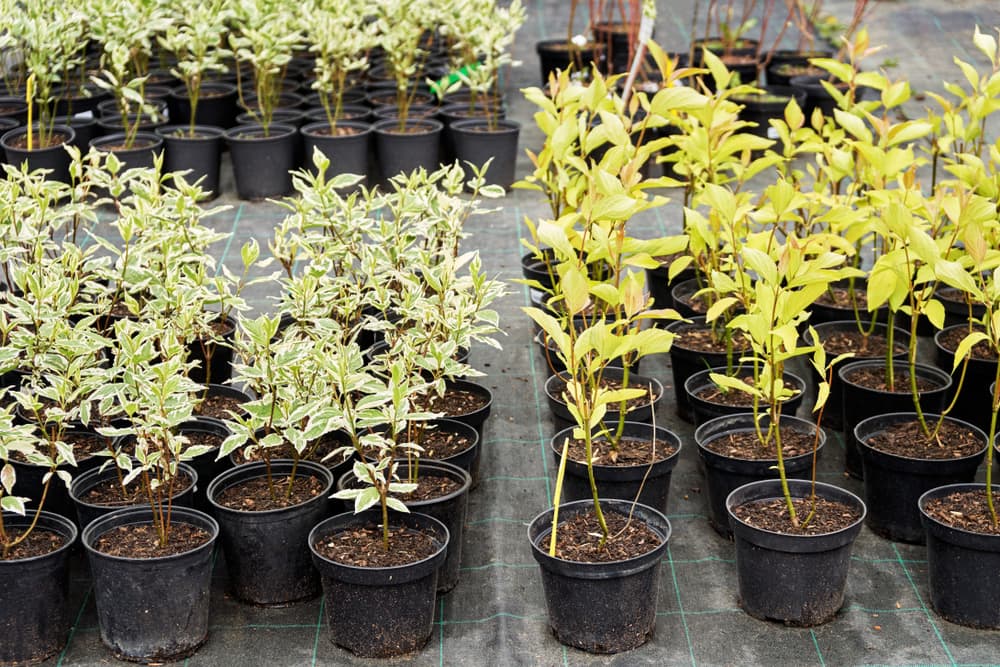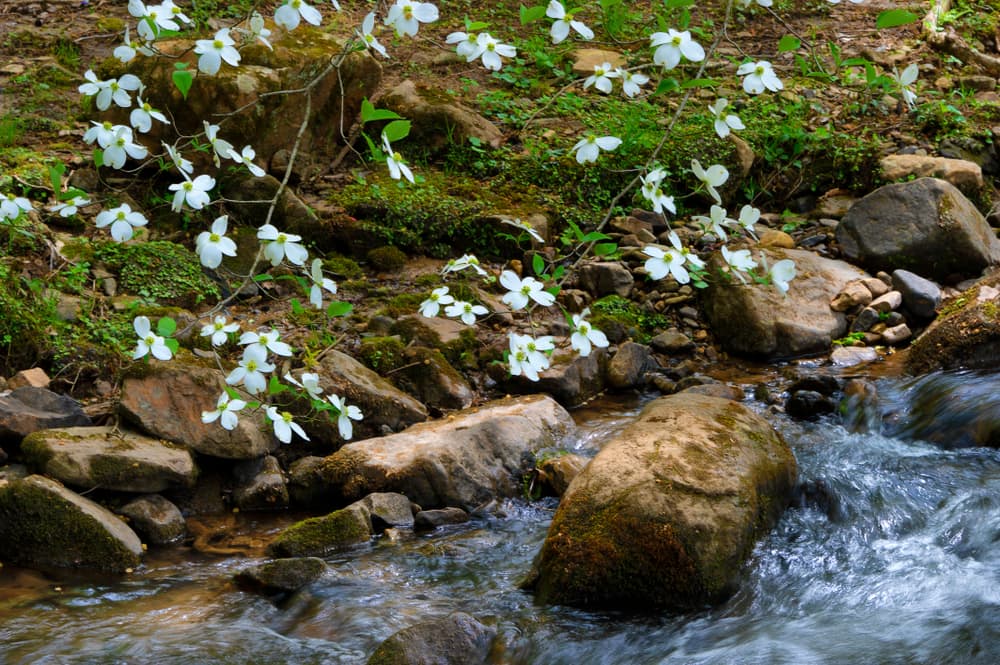Cornus ‘Dogwood’ – How Experts Grow This Plant For Year-Round Colour

TREES > DOGWOOD
Reviewed By ROY NICOL

Roy is a Professional Gardener and Horticultural Consultant, specialising in large garden year-round maintenance and garden development. He is an RHS Master of Horticulture and uses his research in the application of no-dig methods in ornamental garden settings. Roy has been a Professional Gardener for more than six years and is a member of the Chartered Institute of Horticulture, Professional Gardener's Guild and Association of Professional Landscapers (Professional Gardener).
DOGWOOD GUIDES
Want an ornamental tree for a postage-stamp-sized landscape in your garden? One that will provide virtually year-round colour?
Well, a flowering Dogwood will offer richly-hued de facto flowers for a couple of months. Bright scarlet berries, most of them edible, will follow.
Autumn will produce blazes of reds and purples, and winter will bring lovely branching forms or highly-textured bark into view.
Overview
| Botanical Name | Cornus |
| Common Name(s) | Dogwood |
| Plant Type | Trees / Shrubs / Hedging |
| Native Area | Eurasia, Indo-China, North America, Central Africa |
| Hardiness Rating | H5/H6 |
| Foliage | Dark-green, deciduous, ovate leaves |
| Flowers | Distinctive white flowers |
| When To Sow | May, June, July, August, September |
| Flowering Months | March, April, May |
| When To Prune | March |
Sunlight
Preferred
Full Sun or Partial Shade
Exposure
Exposed or Sheltered
Size
Height
4 – 8M
Spread
2.5 – 4M
Bloom Time
Summer
Soil
Preferred
Most soil types
Moisture
Moist but well-drained
pH
Any
If you want several garden landscape trees with notable ornamental value and which will provide year-round interest, look no further than Dogwood trees.
Some species are even appreciated for their eye-pulling, textured bark.
And this is only a general outline – virtually each variety of Dogwood brings its own very special ornamental value and visual appeal to the garden.
Dogwood trees belong to Genus Cornus but not all Cornus are Dogwoods as such, for Dogwood trees are a subset of this genus which is further composed of much-branching shrubs and also a few rhizomatous subshrubs.

However, there is no hard-and-fast line between Cornus trees and Cornus shrubs because several species or cultivars can be either a tall shrub, or a small tree, depending on whether or not the specimen is pruned, and how it is pruned.
“Some Cornus shrubs have brightly coloured stems and are normally coppiced annually for a winter display,” says Master Horticulturist Roy Nicol.
“This is a different group of plants to the Flowering Dogwoods described in this article.”
Most Dogwood trees are quite slow-growing even though they are not overstorey trees or particularly tall trees.
Many Dogwood varieties including very popular C. kousa and cultivars reach heights of only about 7m and even most of the taller ones usually attain heights of 10-12m.

Some species take ‘only’ 20 years to attain their ultimate height while others take 30 and even 40 years.
As a result Dogwood wood is of a superb quality, being strong and dense – it is also desirable for its pretty grain patterns.
How To Grow Dogwoods
Where To Plant
As understorey trees, Dogwoods are quite comfortable in part-shade locations.
However, the sun-shade preference depends on the particular variety and also the climatic zone that that variety is planted in.
In most regions of England, siting Kousa varieties in dappled sunlight or afternoon shade would be preferable over full sun.
At the same time, do not plant them in full shade which would be worse than full sun.
American-native Cornus varieties should be sited in full sun, otherwise partial sun.

As smaller trees with shallow roots, Dogwood trees need to be watered.
The sunnier their location and the hotter the weather, the greater their requirement for water, both in amount and frequency.
Dogwood trees may be called landscape-ornamental trees; they are not shade trees and certainly not tall trees, and should be sited accordingly.
Depending on the particular variety of Dogwood tree, it can be planted in front of a dwelling or behind it, at the boundary of a property, or at the rear of flowering bushes.
With hardiness ratings of Zone H5 or H6, all Dogwood trees are hardy throughout the United Kingdom.
Propagation
Cornus trees can be propagated in any number of ways: from seed, softwood cuttings, semi-hardwood cuttings, hardwood cuttings, grafting, and even suckers, each method in the season-appropriate and suitable to it.
Virtually every variety of these trees can be propagated by at least two of these methods.
Propagating Dogwood trees from seeds is troublesome and is a method best left to experts; also trees grown from seeds take several years to mature.
Grafting is the method of choice but this method also requires expertise.

Though you can grow some Dogwood tree varieties from cuttings without much difficulty, you will have to match the method to the variety as well as the season, after which you will need to prune correctly and watch over it patiently as it will take years to mature.
Amateurs and home gardeners will typically get Dogwood trees as a potted plant or bare root plant.
If you have a choice between the two, opt for a potted plant even though it will cost more, as these can be planted year-round as opposed to bare-root which must be planted in winter.
Dogwood Care
Soil Requirements
The best soil for Dogwood trees is a loose, fertile one that drains very well. Densely-packed or heavy soils are unsuitable.
Sandy loam amended with organic humus, compost, peat, or some combination thereof would be perfect. It may have a layer of gravel or perlite.
Dogwood trees prefer acidic soils. Cornus florida and other American-originated varieties require acidic soils; they will not thrive in close to neutral pH soil.

Soil pH in the moderately acidic to slightly acidic range should work well – 5.6-6.5 (which may be a little lower but not a little higher).
C. kousa and its cultivars also prefer acidic soil but the slightly acidic to neutral range is best for these varieties.
Ideally, potted Dogwoods should be transplanted during mid-winter to mid-spring. Do not transplant them in autumn.
Grafting
Many potted Dogwoods are grafts.
Try to spot the graft and plant the tree so that the graft line is well above the soil level otherwise the tree will revert to the rootstock or may even die.
The most straightforward way to go about it is to plant it to a soil level matching that at which it was in the pot.
Otherwise, if you get a bare-root tree, plant it to about three-fourths of the root ball, keeping about a quarter of it above ground.

Do not store a bare root Dogwood after you receive it.
Unpack it immediately, examine the root system for problems, and set it in a large bucket of water for the root system to soak for 12-15 hours prior to planting.
Watering
After transplanting a potted tree give it a heavy watering.
Give a bare root specimen whose roots had been soaked a moderate watering.
Keep in mind that Dogwoods are shallow-rooted trees; therefore, they should be watered periodically and consistently.
They are not drought-tolerant trees. The amount of sun and extent of the heat would dictate the amount and frequency of watering.
You will need to be more attentive to the water needs of developing and young trees than mature and established ones.

At the same time be sure that the roots do not get waterlogged and that the soil drains well.
Fertilising
Dogwood trees do not need fertilising, especially if your soil is fertile and has organic content, but if you must, fertilise only from its third year.
Fertilise in early spring using a lighter-than-recommended application of 12-8-8 liquid fertiliser.
Mulching around the base will be helpful no matter what region you are in.
In warm, sunny climates, it will keep the soil moist for longer; in frigid climates it will protect the roots during hard frosts.
Tree Pruning
Dogwood tree varieties require little, if any, pruning and some should not be pruned at all.
Shrubs on the other hand do require a stricter pruning regimen.
Be aware, though, that if you wish to grow a Cornus shrub as a miniature tree, you will need to choose a leader, pinch out competing stems, and let the leader develop to the fullest.
For the most part, all you need to do is to prune dead, broken, or diseased branches (such branches must be removed).
Other than that, you should prune when two branches are crossed and touching one another.

If you see a branch emerging from the base of the tree, this too should be pruned for cosmetic reasons.
All pruning should be done in winter and no later than early spring.
Larger branches should be pruned using the Three-Cut Method.
Be very careful about removing any suckers attached to the trunk of the tree as you do not want to cause a wound on the trunk.
Suckers observed on the nearby ground may be removed in winter or the sucker shoots may be mowed over during any season.
Common Problems
Dogwood trees are generally very pest-free trees.
The Asiatic varieties plus C. nuttallii and, particularly, C. florida and its cultivars (but not other American species) are susceptible to cornus anthracnose.
It is a fungal disease that causes blotches on leaves and defoliation, and dieback of stems.
Cornus anthracnose cannot be treated by the hobbyist gardener; this disease calls for the attention of a professional botanist or horticulturist.
Fallen leaves and affected parts of the tree should be removed and destroyed.
You can avoid fungal diseases, root rots, and such by ensuring that the tree is planted in the right type of soil, that the soil pH is not alkaline, it is not sited in full shade, and the soil does not stay damp or waterlogged.

